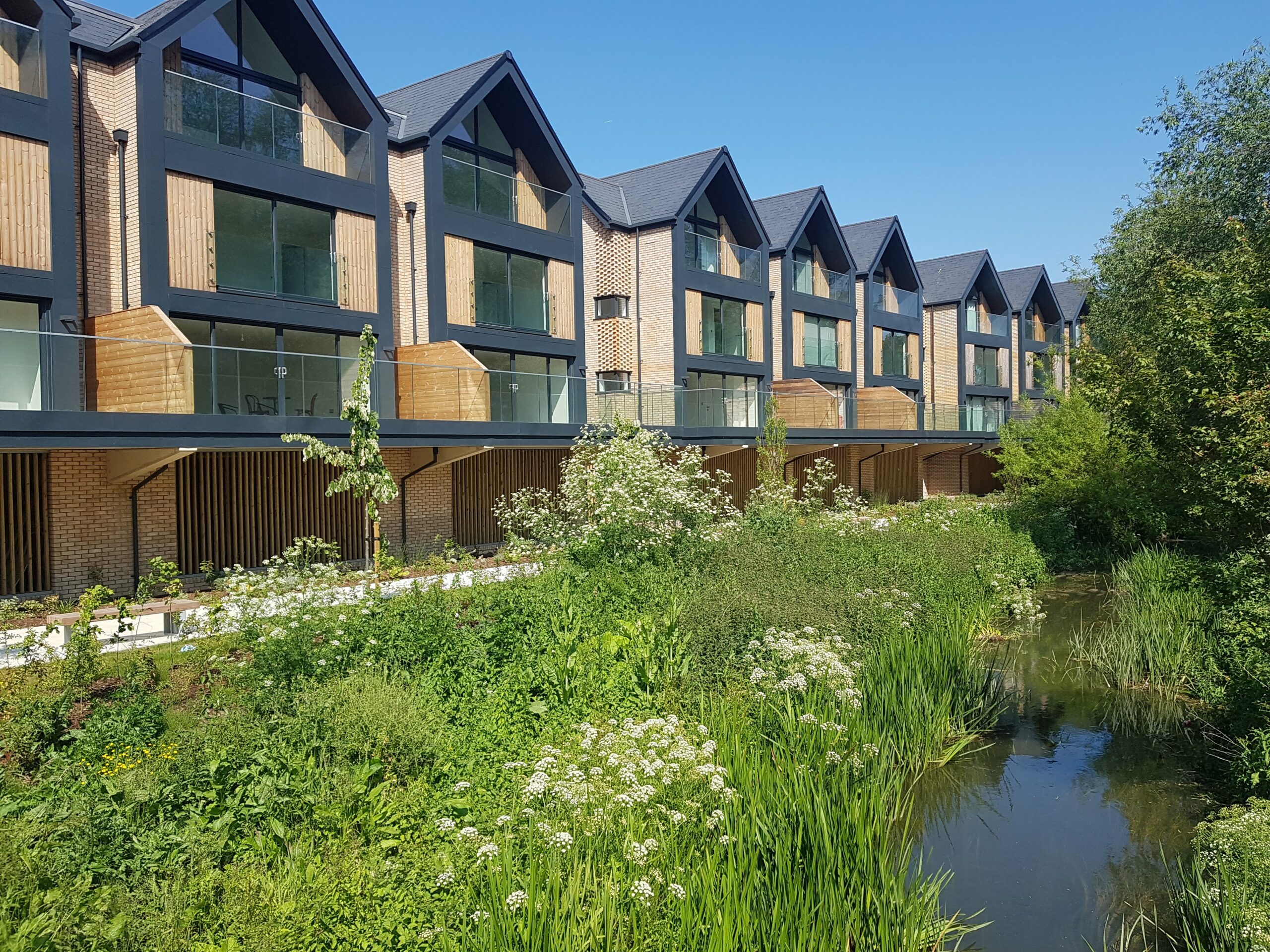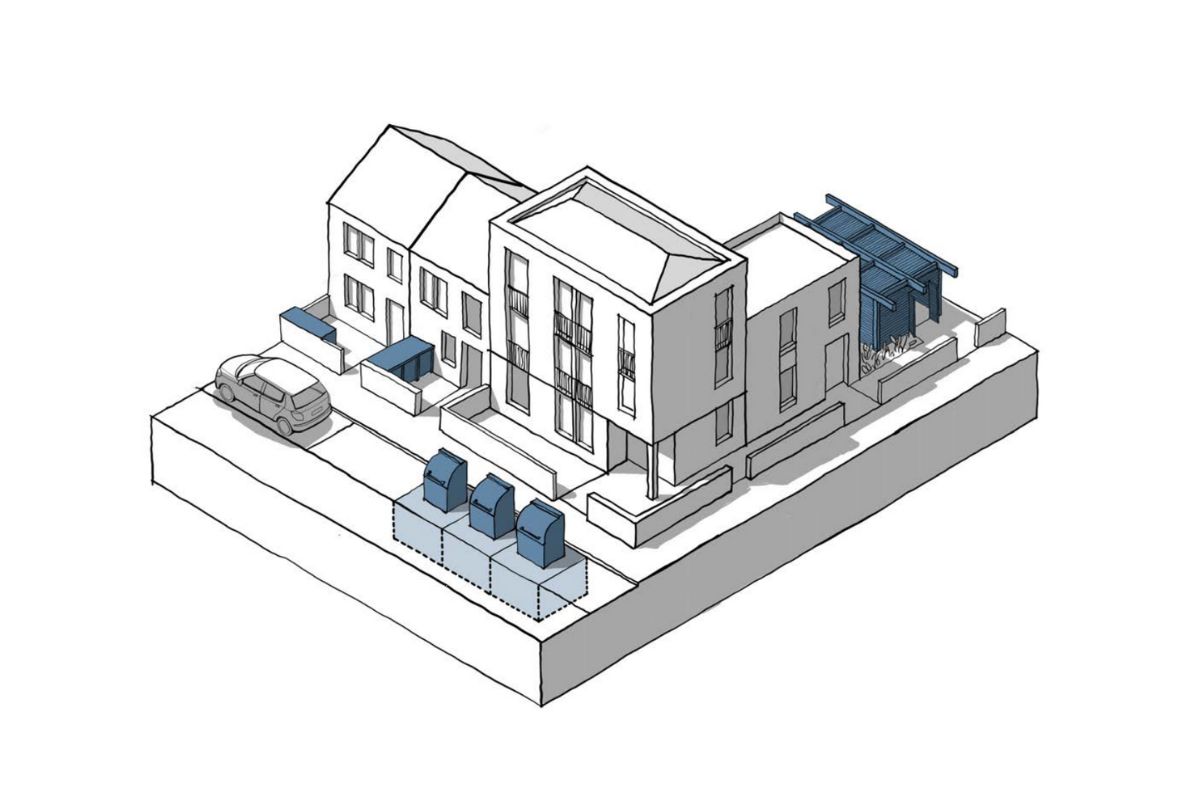30 attendees from across the Kent Design network joined this study tour of Ashford’s town centre regeneration projects and the emerging South of Ashford Garden Community (SAGC), including Chilmington Green. The day began with a round of presentations from Ashford Borough Council and masterplanner JTP exploring the vision and design principles for the garden community. We also heard about the key role of community engagement and stewardship in SAGC before heading out to see the phase 1 developments. After lunch, Ashford Borough Council led a tour of recent town centre projects, with input from Hollaway Studio.
Here are some of our key takeaways:
Community Engagement
Meaningful community engagement on the South of Ashford Garden Community (SAGC) has been ongoing for the past two decades. In 2004, community workshops using a planning boardgame were held to inform the Greater Ashford Development Framework, which identified the area to the south of Ashford for growth. In the 2010s, Ashford Borough Council and consultants JTP led an in-depth engagement process to inform the Chilmington Green masterplan and design code, a significant part of the SAGC. This now guides development coming forward on-site. Community involvement included site visits and workshops with residents, engagement with school children and the establishment of a Community Stakeholder Group for ongoing input into the masterplan.
Masterplan and Design Code
As a ‘Garden Suburb’ of Ashford, the Chilmington Green masterplan was inspired by Ebenezer Howard’s Garden City concept, reflected in the 25% of the area set aside for landscape and open space. Each neighbourhood has access to local centres, schools and other local amenities, while knitting in with the Ashford urban area to the north. Each neighbourhood within the masterplan has its own character, density and architectural approach, with the District Centre acting as the centre of activity with the highest density.
Community-building and Stewardship
The designation as a Garden Community means that greater resources are available for stewardship and community-building within Chilmington Green. The reality of the early phases of such a large development is that new residents are often living alongside construction and can’t yet enjoy the full range of amenities that are planned for later phases. The Chilmington Management Organisation manages community assets and activities to improve the quality of life and engagement of new residents. This includes the creation and management of landscape spaces, walking trails and a community hub as well bringing the community together around art projects and events.
Phase 1 Development
As part of the study tour we visited two contrasting neighbourhoods and the primary school, delivered as part of phase 1. ‘The Hamlet’, by Jarvis Homes, responds to the historic village of Chilmington Green with a low density, traditional architectural approach finished with high quality materials. It includes a pond, which buffers the development from the road and provides aesthetic and biodiversity benefits.
Our final visit within Chilmington Green was the Barratt Homes development, located on the edge of the existing Ashford built up area. This medium density suburban neighbourhood provides a strong 3-storey frontage onto what will be Discovery Park, a major public open space coming forward in a later phase. A member of Barratt met us on site and shared some of their experience.
A changing town centre
Over the last decade, Ashford town centre has attracted landmark uses such as K-College, Elwick Place cinema and Curious Brewery. These destinations are attracting more people to the town centre. Two high profile developments near the town centre will increase its employment base once delivered; the Brompton factory and Newtown Works, a mixed us development including a film studio. Public realm improvements, new public spaces and street art have also added interest. However, like many towns, Ashford has seen a rise in vacant commercial units since the pandemic. This has led to a move away from ground floor retail units to resident amenity facilities within new developments, a creative way of creating an active frontage and responding to new home-working patterns.
Medium to high density residential developments are being delivered along Victoria Road, transforming the character of this corridor. The influx of new residents should be reflected in greater vitality on the high street in coming years. Riverside Park is one such development, which creatively responds to flood risk by placing car parking, storage and sustainable drainage landscape spaces on the ground floor, with apartments above. A continuing challenge for new development is dealing with the perceived need for high parking standards within higher density development.
If you are interested in joining Kent Design, or attending any of our learning events, you can find out more at www.kentdesign.org





